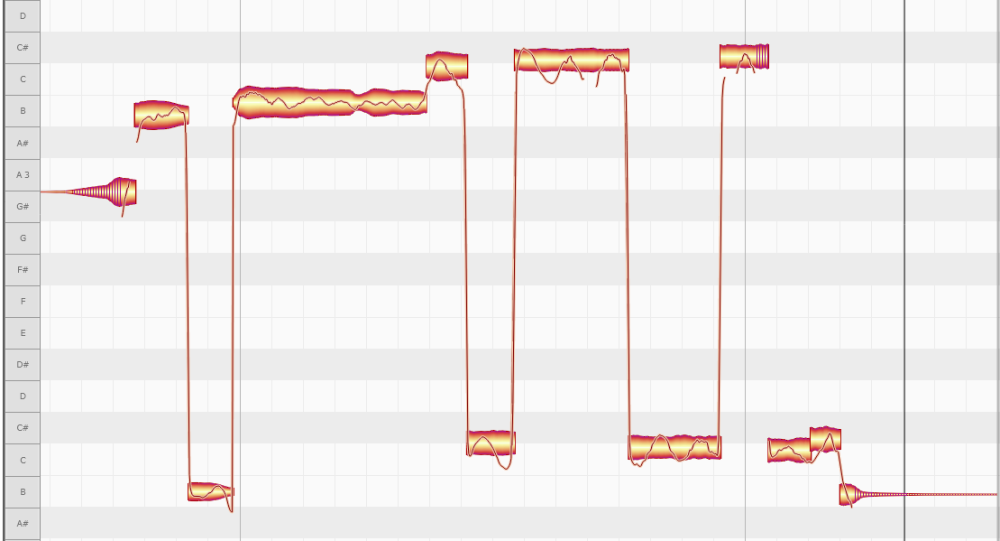-
Posts
495 -
Joined
-
Last visited
Everything posted by HOOK
-
I've been a Cakewalk user for 30+ years, exclusively. And with the announcement of paid Sonar again, I downloaded demos for Cubase and Reaper so I could learn them and set up templates. Wrote and tracked a song in both. But there are a few things in both programs that I'm sure I'd never get over. They both ruin my workflow in one way or another - in big ways. It's hard to break 30 year habits. I still have both templates at the ready, just in case. But Sonar it is...unless they broke it.
-

Anyone out there who can convert .cwb files to WAV files??
HOOK replied to Stafford Dungey's question in Q&A
How's he gonna do that when it's a .bun file and he's only got a mac? -

Motu 4x4 keeps crashing; alternate interface recommendations?
HOOK replied to Thomas Happ's topic in Cakewalk by BandLab
I don't see that you mentioned having the newest drivers and firmware for the MOTU. There are 2023 drivers here. I'd do this before spending more money. https://motu.com/en-us/download/#category=1&product=410 -
I hate updates with a passion, but this went perfectly for me. I haven't tracked anything yet. I did pull up several recent projects and all seems well here.
-
I believe that your basic problem is probably that your kit comes from the factory with midi note 8 (no idea why) on both open and closed HH. Change one of those to 9 in the drum module. And then make sure your drum map correlates.
-
Have you read this and tried it yet? Hope it helps. From Alesis support: Preparing your Drum module Notice in the Default Assignments sections above, that the Hi-Hat Open and Hi-Hat Closed triggers both send a MIDI Message of #8 or G#-2. Because of this any software will be unable to distinguish between the hi-hat open and hi-hat closed triggers. Before we can map the functionality of the trigger, we must assign a different MIDI message to one of these functions. Press the Menu button on your module, then toggle down to Trigger and press Enter to enter the Trigger Settings menu. Use the knob to change the selected trigger to Hi-Hat. Press the Down button and select MIDI Note. Use the Data Dial (big knob) to change the assigned MIDI note. In most cases, and for this example, MIDI note 009 (or A-2) will work. From here, you have manually adjusted the MIDI assignment for the open Hi-hat within your module! Your Open & closed positions will be sending separate MIDI messages.
-

Copying A Section of An Audio Track To Another Audio Track
HOOK replied to Dean's topic in Cakewalk by BandLab
Right about page 500 of the manual should cover what you need. https://bandlab.github.io/cakewalk/docs/Cakewalk Reference Guide.pdf -

It's official: CbB will not continue for long.
HOOK replied to John Vere's topic in Cakewalk by BandLab
You guys got me freaked out. I'm frantically searching my attic for this in case everything goes to sh*t. I know it's here somewhere.... -
The REALLY easy solution to this is for everyone to download the free version of slate and send the project file with the midi in it. You know what you're doing now. You could help them set it up. Then, let them other fools figure out how they want to swap audio files to get it done. I'd get a new band. 🤣
-
I use a version of this trick. Turn off snap when cutting the clip so you can cut directly at the transient. Once it's cut you can turn snap on again and use the stretch tool (F8 - or long hold on "edit" on the tool module) and then you can snap both ends of the cut clip to the grid. It's all manual...but it's perfect.
- 30 replies
-
- 1
-

-
- cakewalkediting
- timing errors
-
(and 1 more)
Tagged with:
-

It's official: CbB will not continue for long.
HOOK replied to John Vere's topic in Cakewalk by BandLab
Paid for gigs? You must live in a simulation. -
United is HUGE man. Great job.
-
I find that USUALLY rejoining that stuff won't fix it because the transitions become unnatural at the cuts. Sometimes I get one I can use like that. But mostly not. I'm pretty much at the point where, if I see that octave jump and the very first auto try doesn't make me happy I just re-sing it. I'll usually comp the first line and work it with Melodyne till I like it 100%. Then I'll sing all the other doubles and harmony layers to that. Generally I don't have to tune any of the layers, but will go back sometimes to see if I like it better with some, or all of those dialed in.
-
What it sounds like. 3-4-23 - empirical labs.wav What it looks like. Same note...alternating octaves. Been that way since the first vocal tuning software came out...and basically has always meant that I have to get it right without help most of the time. 🤣
-
If you've mapped to SSD5, you're getting sounds, and you've routed those sounds to individual tracks - I'm having a hard time understanding why you're not recording yet. Why you'd route out of SSD5 with 48 mono channels is completely lost on me. I route out of SSD5 with 7 channels total. I can't imagine a scenario where you'd need more than that to do the things you want to do. And certainly not more channels than you have actual pads. I have a distinct feeling that you've been conflating some terminology and have a misunderstanding some of the tips you've been given. Not hard to do if this is all new to you. The best way to show you this stuff would be a phone call in conjunction with a Team Viewer session. If you want to do that, message me and we can work it out. I should be free this afternoon...or I should be able to block out a window for you this coming weekend.
-

Timing sounds weird listening from a diff room
HOOK replied to T Boog's topic in Cakewalk by BandLab
I've always found that taking a break and listening from the next room is important, even with a good mix environment. The mix will always sound different from there and may clue you in on something obvious that you're totally missing. Or, at least, show you something you might want to check on. I find that listening from another room allows me to listen like a normal person again...lol. Not so hyper-focused on any one thing in the mix. More of a big picture thing. But the groove and timing? No way. That doesn't change. If the groove sounds off, the groove is off. -
BTW...I still feel like a monkey watching magic when I sit down and all this stuff just works when I open my template. It's really pretty ridiculous. If I had these tools when I was 15 instead of bouncing sounds back and forth between two cassette boom boxes and laying in new tracks via the built-in mics....I'd be so famous that 20 people would know who I am instead of 10. 🤣
-
96khz sampling rate isn't crazy high. But I use it because my system sounds best at that sampling rate. It also has the added effect of helping to keep latency very low. I've worked at 96khz since about 2005 or so. I wouldn't concern myself with it if you're not having issues with the latency you're experiencing. I also wouldn't get too concerned with saving EQ presets. You're building a project and saving it, right? You 'll save that as a template eventually. That project, and subsequent template, will save all those settings in it. You can always tackle saving presets later if you want. What would really help you is a good team-viewer session with someone who can set this up while you watch. Honestly, it seems like you're about 7 mouse clicks away from having this whole thing figured out....lol
-
FYI - I've used Cakewalk since 94. All audio, all the time with countless live drum kits and full rock bands. I never even touched a VST instrument until spring of 2022 because the bands I worked with didn't have any use for them. I learned from YouTube how to make SSD5 work. Granted, a lot of the videos are a little vague and not SSD5 specific. But all the secrets are there to be had. I asked a couple questions here as well. I felt like a monkey trying to understand magic. And then....it worked. The slots on the side of the SSD5 screen where you build a kit - those are to stack sounds on top of the sounds you already have assigned to the drum pads. Add another snare (in any one of those slots) and it'll trigger simultaneously every time you hit your snare. Generally speaking, add a kick and SSD5 knows to trigger that additional sound along with the one you drop on top of the kick. Add toms, and they'll trigger with toms. Watch this video:
-
With a 22ms round trip I can't imagine you're not experiencing that as latency already. This is typically what I prefer, but I can usually live with anything less than a 10ms round trip with drums. In my experience, adding tracks so that the VST can route drum sound to different channels won't add to a latency problem.
-
When you get to the end of this you'll see that everything you were told you can do - you CAN do. You just have no understanding of what you're doing...yet. When Tim gets you THERE...you see how the puzzle fits together and you'll be sad you didn't know all of this for all the years you've been recording audio off your drum module.







